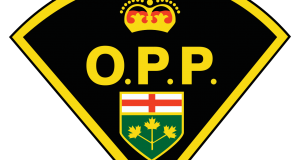At a time when recognition of First Nations’ importance in ecological stewardship is being increasingly recognized around the world, including at the ongoing COP15 conference on Conservation of Biodiversity in Montreal, Ontario is going in the opposite direction. Two First Nations are calling on Ontario to withdraw a controversial effort to contract out the development of a plan for the management of a threatened caribou herd.
For the last several years, Biigtigong Nishnaabeg and Michipicoten First Nations have repeatedly appealed to the Ontario Government, through its Ministry of Environment Conservation and Parks (MECP) to save the last caribou in the Lake Superior Caribou Range (LSCR), which is the southernmost extent of woodland caribou in Canada. The First Nations’ expertise and conservation ethics have been snubbed in a recent effort by MECP to contract out the development of a management plan for the caribou range.
Over the course of the last several decades, the population of caribou around Lake Superior has dwindled to the point where the last 60 or so animals now only inhabit two offshore islands in Lake Superior. The First Nations, backed by scientific evidence, contend that the population has declined due to the province’s indifference to their fate which enabled significant habitat disruptions leading to an ecological cascade of detrimental impacts. When the boreal landscape is disturbed through forestry, access development, and other intrusions that clear the forest, the preferred habitat of caribou (old conifer-dominated forests) are destroyed outright or replaced by the preferred habitat of moose (younger mixed woods or deciduous-dominated forests). As wolf (and other predators) populations that prey on the growing numbers of moose increase, caribou are caught in the crossfire and are subject to greater predation. “This is a well-understood ecological phenomenon,” says Gord Eason, a retired government biologist who lives in Wawa in the Lake Superior Caribou Range. Caribou are much smaller than moose and have fewer young and are therefore more susceptible to predation at the population scale than are moose. The First Nations do not blame wolves for the plight of caribou.
In an extraordinarily cold winter in 2014 wolves crossed the Lake Superior ice and made their way to Michipicoten Island, a large (approx. 185 square kilometre island) 13 km offshore that harboured most of the range’s remaining caribou. Wolves decimated the island’s caribou while government officials observed the ecological catastrophe and refused to act by moving the dwindling number of surviving caribou to nearby predator-free islands. It was only heavy public pressure, the actions of Michipicoten First Nation, and some dedicated local conservationists that saved the caribou as some of the last survivors were moved to nearby wolf-free islands.
The caribou populations on those islands have grown, and there is potential to move caribou back to Michipicoten Island, which now has no remaining wolves, and the mainland in concert with habitat management and other stewardship activities. Biigtigong Nishnaabeg has written a Caribou Stewardship Plan consisting of eleven interlinked strategies intended to save caribou. Biigtigong presented its plan to MECP and the Federal Ministry of Environment and Climate Change Canada (ECCC) and reiterated the obligations of both Ontario and Canada to undertake enhanced meaningful engagement of the First Nations, given that the bulk of the caribou range is in their traditional territories. This has fallen on deaf ears in Ontario.
Earlier this week MECP released a Request for Bid (RFB) seeking consultants to develop a caribou management plan for the LSCR. The First Nations were not told in advance that this was going to occur, were not consulted as to how the plan should be developed, and their interests and history were not included in the RFB, and the RFB contains no direction for meaningful involvement of the First Nations. The First Nations already have a strategy to restore caribou to their traditional lands around Lake Superior. “This is already done. It doesn’t need to be contracted out. They just need to work with us.” said Steven Murphy who works on caribou for the Michipicoten First Nation.
“This is insulting to our people,” said Chief Duncan Michano of Biigtigong Nishnaabeg First Nation and Chief Patricia Tangie of Michipicoten First Nation “Caribou are significant to our cultures and we value them as siblings. The government of Ontario has shown time and again their indifference to caribou and this blatant act of disrespect for us and for caribou is a stain on them and reveals their true lack of a sincere conservation ethic for endangered species“. “ Caribou have supported our people for as long as we have been here. They now need our support” added Chief Tangie.
When governments talk about reconciliation with First Nations it is often very esoteric. Working cooperatively to restore a culturally significant caribou herd to the traditional lands of First Nations along Lake Superior would be a very tangible step towards reconciliation. The First Nations are calling on the Ontario Government to withdraw the RFB, and instead work with them to save the caribou herd.
Quick Facts
- Biigtigong Nishnaabeg is a progressive and prosperous First Nation. Biigtigong Nishnaabeg is translated to “the place where the river erodes”. The term describes the unceded Aboriginal Title lands on which the community is located.
- Biigtigong is located on the north shore of Lake Superior, along Pic River, approximately 300 km east of Thunder Bay.
- Biigtigong Nishnaabeg has a strong aspiration to bring caribou back to the Lake Superior mainland in a sustainable fashion through the design and implementation of Biigtigong’s Caribou Stewardship Strategy.
- Michipicoten First Nation is a strong, proud, independent, interdependent and sustainable Anishinaabe community that respects our culture, lands, water and all our relations.
- Michipicoten is located on the shore of Lake Superior, just west of Wawa
There is evidence of Indigenous Peoples’ occupation in the Michipicoten area for 7,000 years or more, including the period just before the arrival of Europeans.
- Angus Gold Makes New High-Grade Gold Discovery - May 8, 2024
- BTU Acquires Two Extensive Gold Properties - May 7, 2024
- Red Pine Provides Update On Assay Results for Wawa Gold Project - May 6, 2024
 Wawa-news.com You can't hear the 'big picture'!
Wawa-news.com You can't hear the 'big picture'!

